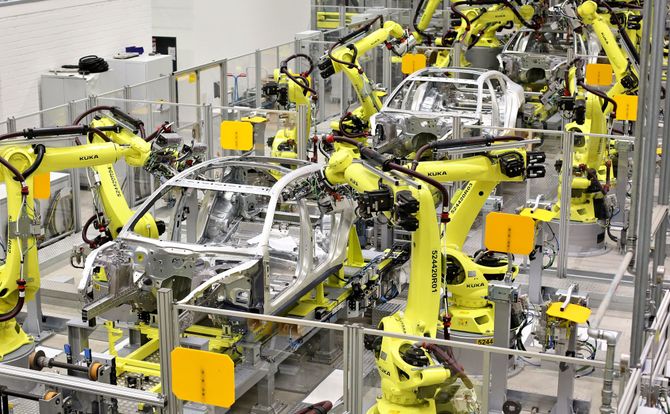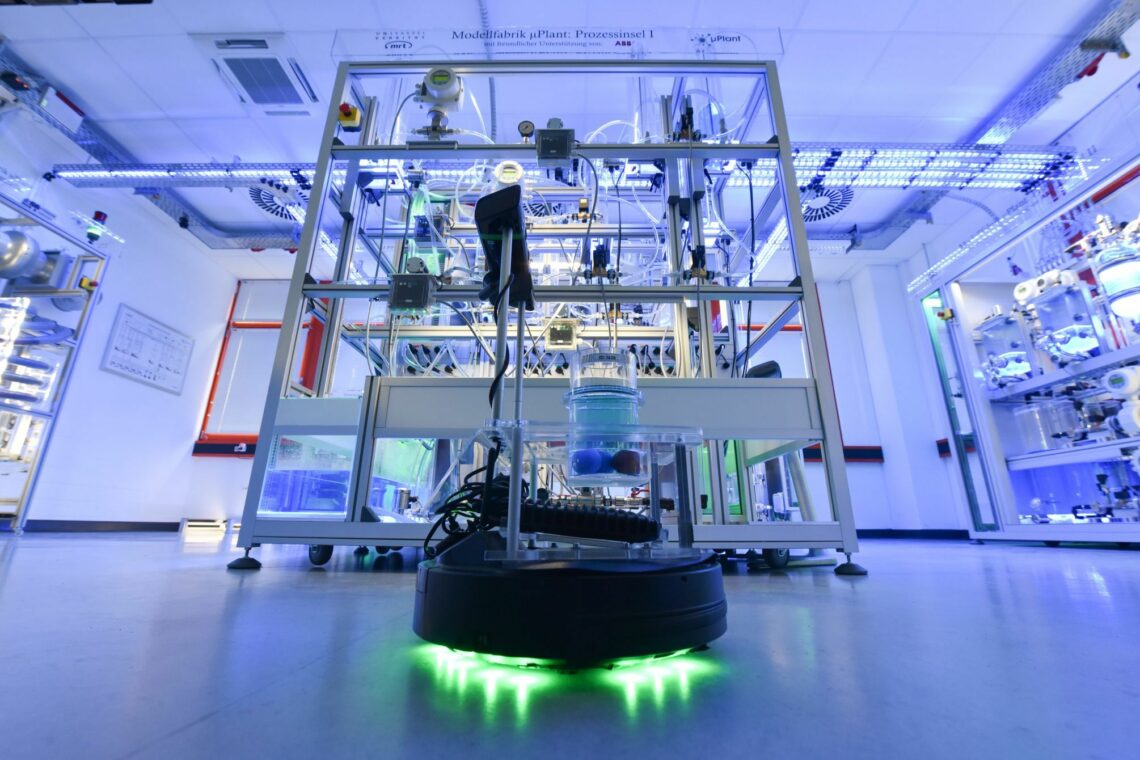Roboshoring: the path toward deglobalization?
The rise of industrial robotics has led some analysts to hail the beginning of a new era of “reshoring” and “deglobalization,” in which companies bring manufacturing back home. The data show a more nuanced story, though, and any manufacturing that returns will not create many jobs.

In a nutshell
- More and more companies are beginning to replace workers with robots
- This will not necessarily bring manufacturing back to rich countries
- Even if it does, the phenomenon will not create industrial jobs
- A neo-Luddite reaction to this trend is possible
Globalization has led firms to offshore many of their production processes to take advantage of lower labor costs. Notably, they have established affiliates or outsourced to manufacturers in Asia. With recent trends toward economic nationalism, calls to “bring industry back home” have grown louder. But how much industry is returning to developed countries? Are we really witnessing a trend toward “deglobalization”? What role does industrial robotics play, and what could be the consequences?
Global factory
One important feature of globalization is that various locations around the world are gradually specializing in particular steps of production processes. Adam Smith’s proverbial pin factory is now better represented by the “global factory” of products such as the iPhone, with a fragmentation of processes around the planet. Rare earth elements are produced in the Democratic Republic of Congo, gyroscopes are made in France, design work is done in Israel and California, assembly in China, and so on. Many of our products come from global value chains (GVCs).
The biggest reason for such fragmentation is various locations’ comparative advantages. Access to local natural resources is an obvious factor, but cheap, abundant labor – especially in Asia – has also been important.
No doubt the innovation of container shipping in the 1950s and then the development of information technology in the 1990s – and more broadly the development of logistics services – made transportation, communication and coordination within GVCs easier. Institutionally, trade liberalization through multilateral bodies like the WTO, and bilateral or regional agreements have helped reduce tariffs and thus the costs of trade. The benefit for firms of offshoring some of their production is lower costs, reflected in bigger profit margins and more competitive prices.
Offshoring’s costs
The efficiency gains can leave end consumers with more disposable income to spend or invest, including on local services, which is good for growth. Moreover, the resulting development of poor countries that take part in these complex GVCs not only enables millions to exit poverty, but also gradually opens up opportunities – including new markets for firms from richer countries. This constitutes another source of global growth.
These often overlooked (because they are gradual and diffuse) benefits help mitigate a major negative effect for richer countries of offshoring to, and then trading with, Asian countries: the more visible loss of manufacturing jobs.
Complex GVCs that require a lot of coordination and long delivery times are problematic.
However, many companies have found that there can be substantial costs that come with relying on distant suppliers or workers. One is the bad reputation attached to what are often perceived as “sweatshops.” Another is the low level of local competences, which translates into low productivity and low quality. The diverse business cultures and legal environments embedded in complex GVCs can generate transaction or coordination costs. The scarcity of spare parts or maintenance specialists if a machine breaks down, or the vagaries of weather or geopolitical events, can halt production lines and cause huge delays.
Poor physical and institutional infrastructure, such as weak intellectual property protection, also needs to be considered. Industrial clusters in richer countries can generate useful innovation, while the separation of production from research and development in long and complex GVCs can weaken innovation and erode business competitiveness. Finally, when customers in Western countries want things quickly, flexibility is a must. Complex GVCs that require a lot of coordination and long delivery times from distant Asian countries are problematic: reacting quickly requires short distances.
Reshoring on the rise?
So sometimes the costs of offshore outsourcing can offset the gains – especially as local wages gradually rise, eating away the labor cost-based competitive advantage. In China, for example, the minimum monthly wage rose from 840 yuan in 2008 to 2,420 yuan in 2018. One answer from Western companies to such challenges has been “nearshoring,” that is, offshoring to locations closer to home. Doing so gives them better control, reduces distances and shortens delivery delays.
It seems every region in the world now has lower-cost “near” locations, and free trade agreements can also ease trade with certain countries (such as Mexico and the United States). European textile companies have increasingly relied on “near-sourced” production in Portugal, Morocco or Turkey – countries that combine proximity and know-how. Quick lead times with two-day delivery enable flexibility, reactivity and easier customization.
But “reshoring,” that is, returning production to the original “rich” country, is also perceived as on the rise, and automation is frequently cited as the cause. One of the main reasons for outsourcing is low-cost unskilled labor: but what if robots can now perform the job better than humans, more productively, with fewer quality issues, at close to the same cost, faster and closer to home markets? Rising wages in low-cost countries, coupled with better, less-costly automated production, is motivating firms to reshore production, hiring robots instead of humans.

Shoemaker Adidas has been in the headlines recently, with the opening of its automated “Speedfactory” plants in southern Germany and the U.S. The factories reduce lead time between design and delivery from 18 months to a week. This innovation is just one example of how the number of tasks robots can handle has increased and the quality of their work improved. Some analysts have therefore attributed the new excitement over reshoring to industrial robotics, and predict a “deglobalization” process. Bringing manufacturing back home to be done by robots has been dubbed “roboshoring” or “bot-shoring.” But is there a solid trend? Two studies published this past spring can help give us a better idea.
Tenuous link
One recent study by the Organisation for Economic Co-operation and Development (OECD) looks at developed and emerging economies between 2000 and 2014. For the first group, the link between investment in industrial robots and slower offshoring growth begins around 2010, and seems to be stronger in more labor-intensive industries (the link is not clear for emerging economies). But does this translate into a causal relationship between robots and reshoring?
In an earlier study, the authors first suggested the evidence at the aggregate level was limited, although there may be a trend at the company level – but in terms of investment, not employment, suggesting that robotics indeed plays a role. Their new aggregate indicator of reshoring is not correlated with investment in robots. Reshoring is visible, both in terms of capital and employment (especially in the 2010-2014 period), at the multinational enterprise level, but there is no significant correlation with investment in robots.
Moreover, rich countries that invest heavily in robotics did not see a strong trend toward the reshoring of jobs. For developed economies, investment in robotics did not lead to reshoring, but had a slight effect on the reallocation of resources within multinationals’ various affiliates toward employment growth (not in recent years, however). Finally, investment in robots in developed economies can help firms upgrading within global value chains (in terms of more advanced production processes, functions or products).
Reshoring seems to be more frequent in smaller companies, which tend to have less experience in offshoring.
Another recent study focused on trends in German, Austrian and Swiss firms toward reshoring and advances in robotics-based production technology. Researchers did not find any causal relationship between the two phenomena, which in any case affect only a small proportion of firms: there is no “deglobalization” effect yet.
There were some other interesting results, though. First, the development of 3D printing (also known as additive manufacturing) does not seem to have had an impact yet, as it is still in its infancy and is used almost exclusively for prototypes. Second, reshoring seems to be more frequent in smaller companies, which tend to have less experience in offshoring and make more mistakes. They also might compete in more specialized market niches, where proximity to customers is key.
Third, reshoring is also more likely in sectors using “complex systems,” like the automotive industry. Advanced automation is a natural step in such a production environment, but it then also requires physical integration to avoid coordination costs across various production units scattered around the planet. Fourth, suppliers are less prone to reshoring, as they simply go where their customers are. Finally, reshoring is unlikely to increase manufacturing jobs, especially low-skilled ones – only high-skilled workers will benefit.
Neo-Luddites or new opportunities?
All this suggests that we are in the early stages of a larger trend. Yet given the pace of progress in robotics, the potential for disruption is serious. A rather pessimistic scenario sees deglobalization, a sustained deindustrialization of some emerging economies, less human manufacturing and a reindustrialization in richer and well-industrialized emerging countries based on robotics that does not generate much employment for humans, except for some high-skilled jobs. For example, Chinese retailer JD.com already has a fully automated warehouse in Shanghai that can process 200,000 orders a day, with only four employees to look after its robots.
This raises the question of further development opportunities – not just for emerging economies, but also for very poor ones. The age-old specter of technologically induced unemployment could become a real possibility in all countries: in the past, mechanization left human work available for less “physical” labor, but today’s robots seem to have a comparative advantage in basically everything. The “neo-Luddites” would be vindicated. In rich countries, some see the only solution to the problem of “robots taking our jobs” in a universal basic income granted to all citizens.
Past visions of gloom and doom have always been overcome by market creativity.
An optimistic scenario would be based on new, unforeseen opportunities and innovations. First, while there could be a trend toward deglobalization – with fewer or shorter GVCs and more regionalization of trade – for typical industrial products. There could also be more globalization in other sectors that are, for example, more dependent on geography. What matters is that deglobalization is not imposed by trade policies.
Concerning robots and employment, past visions of gloom and doom have always been overcome by market creativity, which relentlessly reallocates human talents to new services. After all, 250 years ago, roughly three-quarters of the population of now-rich countries worked in agriculture (versus 2 or 3 percent today). Mechanization did not generate unemployment; it enabled employment elsewhere.
The key is entrepreneurship, provided there is a sufficient degree of economic freedom (which includes openness to trade). For example, additive manufacturing represents an opportunity for small entrepreneurs to develop decentralized, localized production. With it would come a host of new opportunities for suppliers and other partners.
Finally, if industrialization – partly thanks to its potential for increasing returns – has historically been an engine for development and employment, it is not the only path. Services can generate growth and employment, too.







